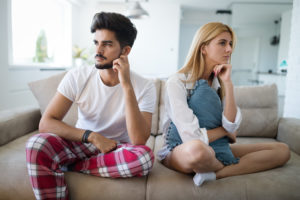Big Money in Play: NCAA Permits School Assistance with NIL Activity | BakerHostetler
On April 17, the NCAA Division I council approved a proposal that allows schools to assist with name, image and likeness (NIL) activity.[1] The rule allows member schools to increase their support for student-athletes to include identifying NIL opportunities and facilitating such deals between players and third parties.[2]
To receive support from their schools, student-athletes will be required to disclose information related to any NIL activity equal to or greater than $600 in value no later than 30 days after entering or signing an NIL agreement.[3] Current student-athletes will be required to disclose contact information for involved parties and service providers, terms of the arrangement, and applicable compensation between them and the service provider.[4] Prospective student-athletes must disclose the same information for preenrollment NIL activity within 30 days of enrollment to be eligible for school assistance with NIL activities.[5] All disclosed data will be “deidentified and aggregated for trend reporting and some level of transparency.”[6]
According to Opendorse, the NIL market is worth an estimated $1 billion annually.[7] The amount a student-athlete can make runs the gamut from a couple of hundred dollars to thousands.[8] For some select few, NIL endorsement opportunities are worth millions. Top NIL earners include Bronny James, $4.9 million; Shedeur Sanders, $4.7 million; Livvy Dunne, $3.6 million; and Caitlin Clark, $3.1 million.[9] Anecdotal evidence collected in 2022 by influencer company Captiv8 demonstrated that “athletes outperform[] influencers by wide margins” and “are the best-performing subset of influencers available right now to brands.”[10]
The market is ripe for student-athletes to make major money through NIL deals. Now, with approval from the NCAA, schools can assist with facilitating these deals. Critically, while schools will be able to source and facilitate these deals for student-athletes, pay-for-play and compensation by the school for use of a player’s NIL are still prohibited. This prohibition, however, and the NCAA’s ability to enforce its rules are the subject of ongoing litigation brought by the attorneys general of Tennessee and Virginia.[11] As this authority is challenged, the role of the school in a student-athlete’s NIL activities will continue to change. BakerHostetler’s interdisciplinary approach to NIL matters provides administrators, athletes, advertisers and collectives with the opportunity to fully understand their deals while providing the necessary legal protections. To stay up to date on all NIL- and sports industry-related matters, please contact industry marketing lead Cynthia Keveney at ckeveney@bakerlaw.com.
[1] Press Release, “DI Council approves NIL reforms, permits school assistance with NIL activity,” NCAA (April 17, 2024),
[2] Id.
[3] Id.
[4] Id.
[5] Id.
[6] Id.
[7] Dan Whateley and Ashley Rodriguez, “How NIL deals and brand sponsorships are helping college athletes make money,” Business Insider (April 2, 2024),
[8] Id.
[9] Paul Rudder, “Who is the highest paid college athlete? NIL endorsement deal money in NCAA sports,” NCAA (March 25, 2024),
[10] Whateley, supra note 7.
[11] Ron Gaither, Libby McCurrach and Sydney Park, “NCAA’s New NIL Policies Hit with Antirust Suit By State Attorneys General,” BakerHostetler (Feb. 8, 2024),
[View source.]






